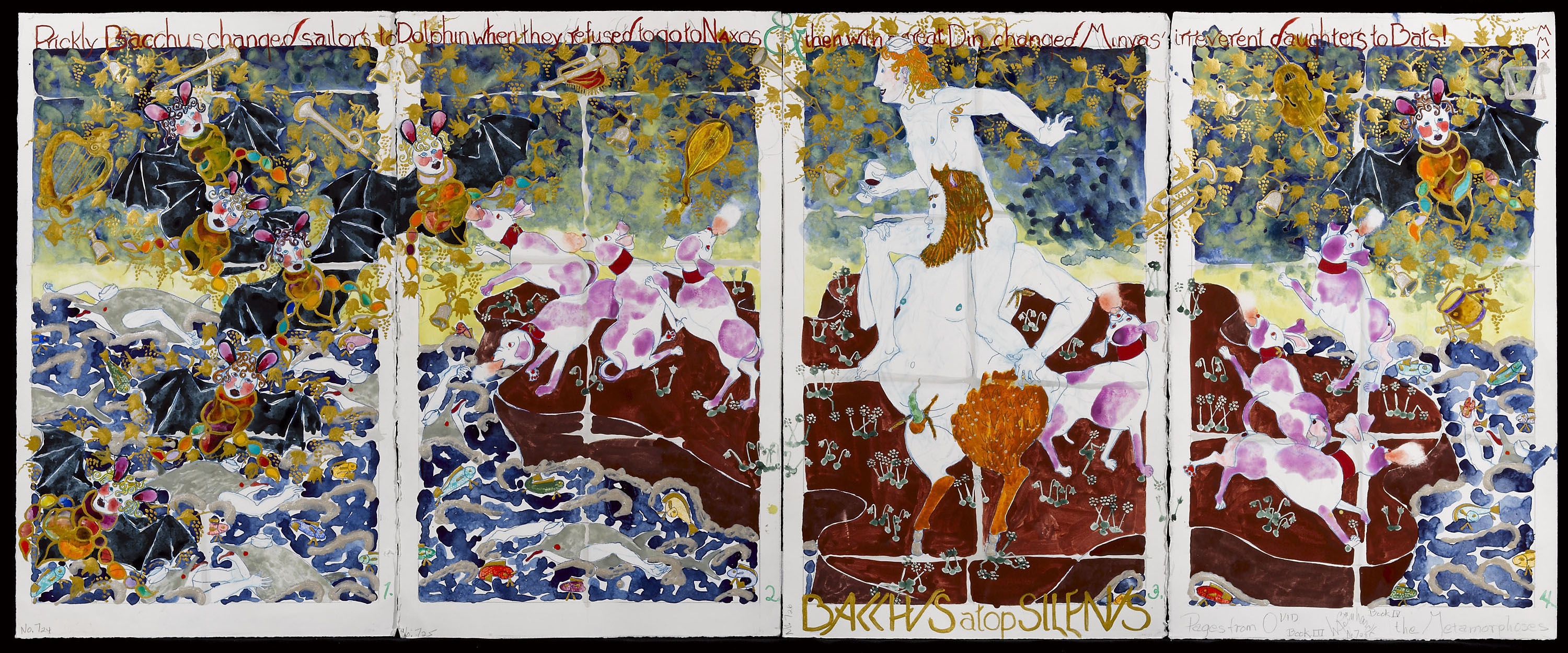A metamorphosis (pl: metamorphoses) is a change or transformation of physical form, appearance, structure, or substance. This module examines how and why myths adapt and are altered, in different forms, and through time and space.
One of the best-known works of Western mythology is an epic catalogue of mythical transformations, The Metamorphoses, composed by the Roman poet Ovid (43 BCE–17/18 CE)– an elite, bestselling, male poet subsequently exiled to the edges of the Roman Empire. More widely illustrated than any book except the Bible (see Barolsky, 2014), this famously unconventional poem by one of the most canonical Latin authors not only underpins a vast number of cultural allusions, but also embodies a fascinating mass of contradictions about storytelling. It offers an unparalleled way in to consider issues including: questions of power inherent in storytelling about sexuality and society; the problematic role of Greco-Roman antiquity in subsequent cultures around the world; and questions of reception, adaptation, and translation/transfer.
Ovid’s Metamorphoses both introduces some key stories from the canon of ancient Greek and Roman myth (literal metamorphoses), and also provides a springboard to examine metaphorical metamorphoses: how these stories have been adapted, both in and since antiquity, through multiple transmission routes and in such a way that they have continued to pose and answer questions that are still pertinent today.
We’ll explore key characters (including, for example, Prometheus and Pandora, Orpheus and Eurydice, Perseus and Medusa, Pygmalion and Galatea) in their ancient and modern manifestations across a wide range of cultural forms including classical drama, philosophical texts, the short story, the novel, the visual arts, classical and popular music, film, and dance. Some theoretical perspectives on myth and modernity will also be considered.
All texts will be studied in English.
One of the best-known works of Western mythology is an epic catalogue of mythical transformations, The Metamorphoses, composed by the Roman poet Ovid (43 BCE–17/18 CE)– an elite, bestselling, male poet subsequently exiled to the edges of the Roman Empire. More widely illustrated than any book except the Bible (see Barolsky, 2014), this famously unconventional poem by one of the most canonical Latin authors not only underpins a vast number of cultural allusions, but also embodies a fascinating mass of contradictions about storytelling. It offers an unparalleled way in to consider issues including: questions of power inherent in storytelling about sexuality and society; the problematic role of Greco-Roman antiquity in subsequent cultures around the world; and questions of reception, adaptation, and translation/transfer.
Ovid’s Metamorphoses both introduces some key stories from the canon of ancient Greek and Roman myth (literal metamorphoses), and also provides a springboard to examine metaphorical metamorphoses: how these stories have been adapted, both in and since antiquity, through multiple transmission routes and in such a way that they have continued to pose and answer questions that are still pertinent today.
We’ll explore key characters (including, for example, Prometheus and Pandora, Orpheus and Eurydice, Perseus and Medusa, Pygmalion and Galatea) in their ancient and modern manifestations across a wide range of cultural forms including classical drama, philosophical texts, the short story, the novel, the visual arts, classical and popular music, film, and dance. Some theoretical perspectives on myth and modernity will also be considered.
All texts will be studied in English.
